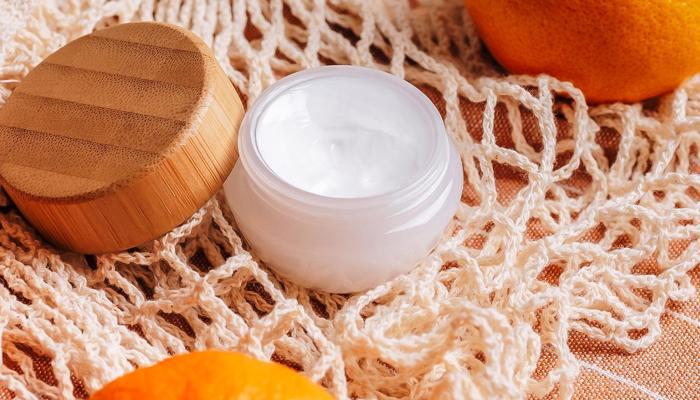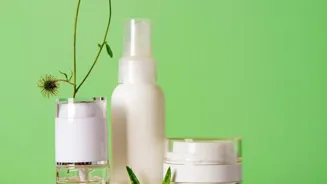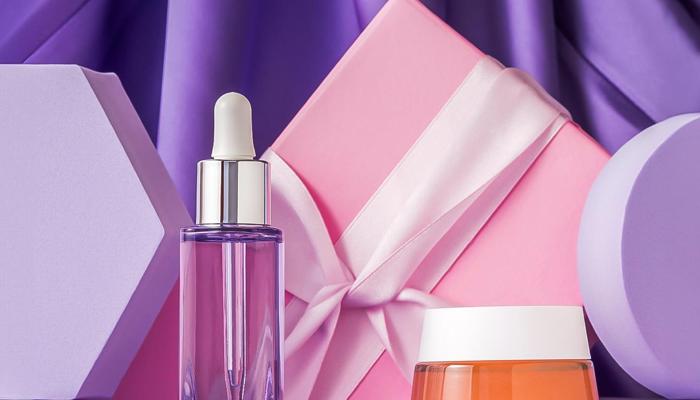Unveiling Clean Beauty: A Guide to Safer, Sustainable Beauty Choices. Decode the trend, bust myths, and make informed decisions. Read on!
The Indian beauty market is changing, and one of the biggest trends
is the rise of "clean beauty." You might have heard the term, seen products labelled “clean”, or wondered what all the fuss is about.
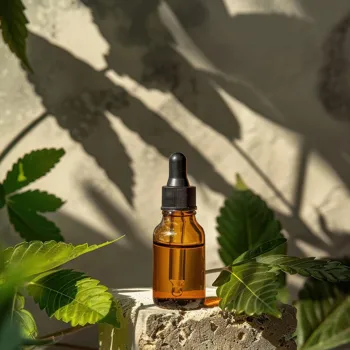
Simply put, clean beauty is all about choosing products made without ingredients considered harmful to human health. It's not just a fad; it's a conscious shift towards safer and more sustainable beauty routines.
Clean beauty focuses on safe, sustainable ingredients
Unlike industries like organic food, there isn't one universal definition of "clean beauty." This can be confusing for consumers. However, the main idea is that clean beauty products avoid ingredients that are potentially toxic, irritating, or unsustainable.
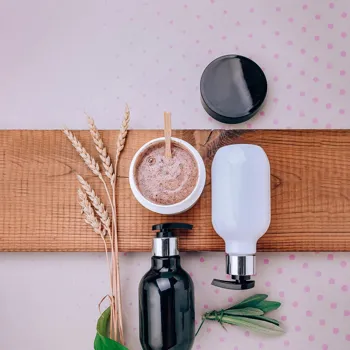
This often includes ingredients like parabens, sulfates, phthalates, synthetic fragrances, and certain dyes. Brands focusing on clean beauty carefully select ingredients that are deemed safe for both you and the environment, focusing on sourcing and environmental effect.
Clean beauty movement in India driven by awareness, influencers, conscious consumerism
Several factors are driving the clean beauty movement in India. Firstly, there's growing awareness among consumers about the potential health risks associated with certain chemicals found in conventional beauty products. People are reading labels more carefully and doing their research.
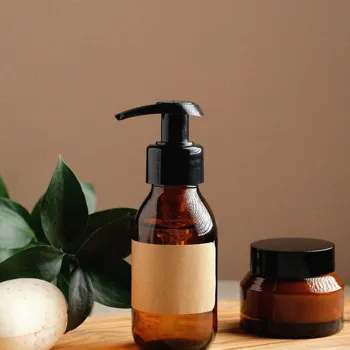
Social media plays a big role, with influencers and bloggers sharing information about ingredients and promoting clean beauty brands. Plus, there’s a general rise in conscious consumerism.
People want to buy products that reflect their values, whether this be environmental protection or personal wellbeing.
Beware of greenwashing in clean beauty products
As clean beauty gains popularity, some brands engage in "greenwashing." This means they falsely promote their products as clean, natural, or sustainable when they're not. Always read labels carefully, look for certifications from recognized organizations, and research the brand's ingredient policy.
Focus on ingredient lists rather than just relying on marketing claims. Consider brands that are transparent about their sourcing and manufacturing processes.
Trustworthy brands will easily provide information about each ingredient used in their products, why they're using it, and any relevant safety data.
Indian brands adopt clean beauty with Ayurveda principles
The good news is that many Indian brands are embracing clean beauty. These companies are creating effective and safe products using natural and traditional ingredients. Look for brands that focus on Ayurveda principles, using herbs and botanical extracts known for their skin-loving properties.
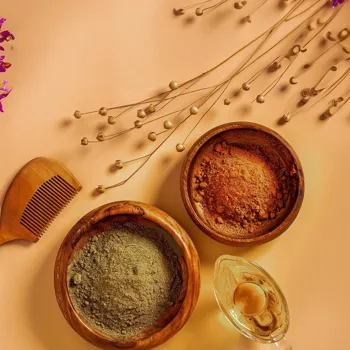
Supporting Indian clean beauty brands not only gives you access to safer products but also helps to empower local artisans and reduce environmental impact by minimizing transportation and other environmental factors.
Switch to clean beauty gradually for health & planet
Switching to clean beauty doesn't have to be complicated or expensive. Start small by replacing one or two products at a time. For example, swap out your regular cleanser for a gentle, sulfate-free alternative. Then, look for a moisturizer that's free of parabens and synthetic fragrances.
Gradually replace other products as you run out of your existing ones. Remember that this is a journey, not a race. Be patient with yourself and stay informed. The aim is to make informed choices that are good for your health and the planet.
You can research each product and read reviews before making any choice.
Ingredients to avoid in clean beauty products for healthier skin
Okay, let’s get a little more specific regarding the ingredients that clean beauty seeks to avoid. Parabens are preservatives often used in everything from shampoos to lotions. They’ve been linked to hormone disruption.
Sulfates are surfactants that create a foamy lather, commonly found in cleansers and shampoos. They can strip the skin of its natural oils, leading to dryness and irritation.
Phthalates are plasticizers used in some cosmetics to make them more pliable, and they are also linked to hormone disruption. Synthetic fragrances can contain hundreds of chemicals, some of which can cause allergies and skin sensitivities.
Clean beauty brands often use essential oils or natural extracts instead.
Look for reputable certifications for product safety
Because there's no single official definition, it’s helpful to look for certifications from reputable organizations. Certificates given by authorized authorities can give you assurance. They show that the product has been independently tested and meets certain safety standards.
Some well-known certifications include ECOCERT, COSMOS, and Made Safe. These organizations assess products based on factors like ingredient safety, sustainable sourcing, and ethical manufacturing practices.
Having the right certification means that a third party has investigated the product for harmful chemicals.
Clean beauty brands prioritize sustainability in product packaging and sourcing
Clean beauty isn't just about what's in the product; it's also about the packaging and sourcing. Many clean beauty brands are committed to using sustainable packaging materials.

They are looking to minimize their environmental footprint by using recycled materials, glass containers, or biodegradable packaging. When choosing clean beauty products, consider brands that prioritize sustainable sourcing.
This means that ingredients are harvested in a way that doesn't harm the environment or the communities where they're grown. By buying from environmentally aware brands, you are taking a stand for ecological stability.
Skin type determines suitable products; test before using
Just because a product is labelled “clean” doesn't mean it's automatically suitable for everyone. Different skin types have different needs. What works for oily skin might not work for dry skin, and vice versa.
If you have sensitive skin, look for products that are specifically formulated for sensitive skin. These are typically fragrance-free and hypoallergenic. If you tend to have allergies, always test a small amount of the product on your skin before applying it all over your face.
Choosing the right clean products will require some diligence.
Misconceptions about clean beauty products debunked
There are several misconceptions about clean beauty. One common myth is that clean beauty products are less effective than conventional products. This isn't always true. Many clean beauty brands offer highly effective products that deliver visible results.
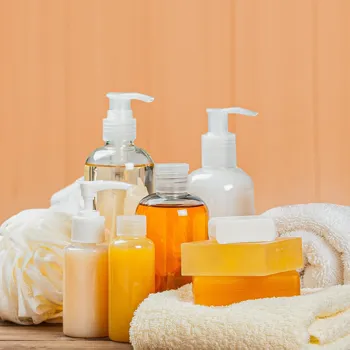
It's also important to remember that "natural" doesn't always mean safe. Some natural ingredients can be irritating or allergenic for some people. Clean beauty emphasizes ingredient safety and effectiveness. Consider the products to determine for yourself if they fit your needs.
Clean beauty movement growing in India, choose wisely for health and planet
The clean beauty movement in India is here to stay, and it’s only going to grow stronger. As more consumers become aware of the importance of safe and sustainable beauty practices, the demand for clean beauty products will continue to rise.
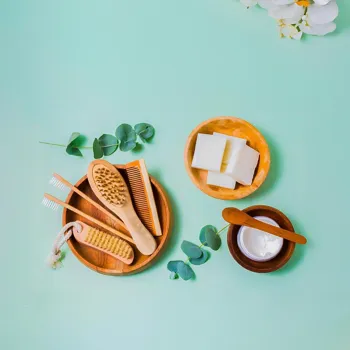
We can expect to see more Indian brands embracing clean beauty principles and offering innovative and effective products. Be sure to make the right decisions for personal and environmental wellbeing.
Choosing clean beauty products doesn’t only improve your personal health but you are also contributing to a better planet.
AI Generated Content. Glance/InMobi shall have no liability for the content
